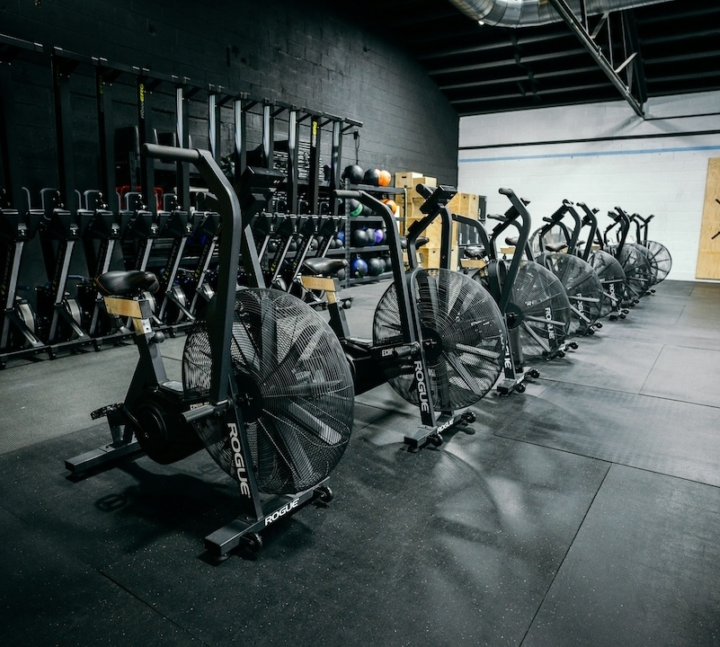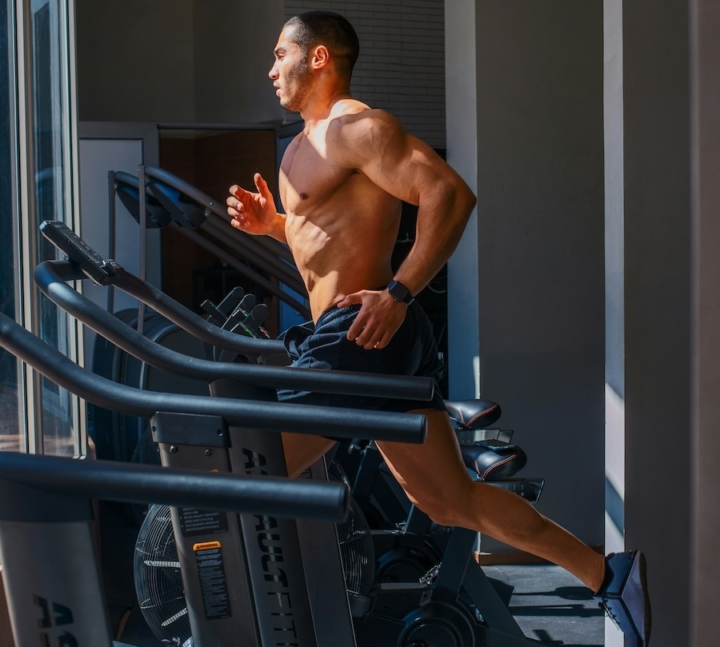Exercise
Ski-Erg
How to Perform - Ski-Erg
- Stand facing the Ski-Erg machine with your feet hip-width apart and grip the handles with palms facing inward at shoulder height.
- Engage your core and maintain a slight forward lean from your hips while keeping your back straight and shoulders relaxed.
- Begin the movement by extending your arms overhead while maintaining a slight bend in your elbows, and simultaneously rise onto the balls of your feet.
- As you pull downward, drive your arms forward and down while bending at the hips and slightly at the knees, exhaling during this portion of the movement.
- Continue pulling the handles down past your torso, keeping your elbows close to your body and wrists straight throughout the movement.
- Once your hands reach hip level, begin to straighten your legs and return to a more upright position while maintaining core tension.
- Allow the handles to rise back up in a controlled manner as you inhale, returning to the starting position with arms extended overhead.
- Repeat the motion in a fluid, rhythmic cycle, focusing on generating power from your legs and core rather than solely from your arms.
Important information
- Keep your back straight throughout the entire movement to protect your spine and maximize power transfer from your lower body.
- Focus on driving the movement from your legs and core rather than pulling primarily with your arms and shoulders.
- Adjust the resistance level based on your fitness goals – lower resistance for endurance training, higher resistance for power development.
- Maintain a consistent rhythm and avoid jerky movements that could strain your shoulders or lower back.
Primary Muscles
Muscle Groups
Mechanic
Risk Areas
Built for progress
Take the guesswork out of training
Create personalized AI-powered workout plans that evolve with you. Train smarter, track every rep and keep moving forward, one workout at a time.






The Ski-Erg has become a staple in functional fitness training, offering intermediate-level athletes a comprehensive upper body and core workout that particularly engages the lats, traps, and abs through a natural pulling motion. This versatile machine mimics the movement pattern of Nordic skiing, delivering an effective cardiovascular challenge without the impact stress that comes with running or jumping exercises. Originally designed for cross-country ski training, the Ski-Erg has found its way into various training methodologies including HIIT, CrossFit programming, and even active recovery sessions. Its adaptability makes it particularly valuable: you can go all-out for short, intense intervals that spike your heart rate during HIIT workouts, incorporate it into challenging CrossFit circuits, or dial back the resistance for a steady-state recovery session after a heavy strength day. The beauty of the Ski-Erg lies in its endurance-building capabilities. The pulling motion engages the posterior chain while the standing position requires core stabilization throughout the movement.
This combination creates a metabolic demand that improves cardiovascular conditioning while simultaneously developing muscular endurance in the upper body: something that traditional cardio machines often neglect. What sets the Ski-Erg apart from other cardio equipment is the performance feedback it provides. The monitor displays metrics like calories, watts, pace, and distance, allowing you to track progress objectively and set specific targets for your training sessions. This data-driven approach helps maintain motivation and ensures continuous improvement in your cardiovascular fitness. For those looking to diversify their cardio routine, the Ski-Erg offers a refreshing alternative that challenges the body in new ways.
Whether you're an athlete cross-training for sports performance, a fitness enthusiast seeking variety, or someone working around lower body limitations, this machine delivers an efficient, full-body endurance workout that complements any well-rounded fitness program.
FAQ - Ski-Erg
The Ski-Erg primarily targets your latissimus dorsi, trapezius, and abdominal muscles, while also engaging your shoulders, triceps, and quadriceps during the full movement pattern. The pulling motion heavily activates your posterior chain, making it an excellent complement to push-dominant exercises in your training program.
Lower damper settings (1-4) are ideal for endurance work, technique development, and recovery sessions, while higher settings (7-10) increase resistance for power development and strength training. Most intermediate athletes find a setting between 5-7 provides a balanced workout that challenges cardiovascular capacity without compromising technique.
The most common mistakes include relying too heavily on arm strength instead of engaging the core and legs, rounding the lower back during the pull, and failing to fully extend at the top of the movement. Focus on initiating power from your legs and core, maintaining a neutral spine throughout, and creating a fluid, continuous motion rather than disconnected pulls.
You can use the Ski-Erg for 10-20 minute steady-state cardio sessions, incorporate it into HIIT workouts with 30-second all-out efforts followed by rest periods, or add it to circuit training between strength exercises. For cross-training purposes, 2-3 Ski-Erg sessions per week of varying intensities will significantly improve your upper body endurance and cardiovascular fitness.
Yes, the Ski-Erg can be modified for those with lower body limitations by performing the exercise seated on a box or bench, focusing primarily on the upper body pulling motion. This makes it an excellent cardio option for those recovering from knee, ankle, or hip injuries who still want to maintain cardiovascular fitness without lower body impact.








